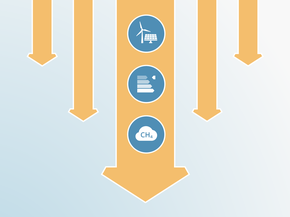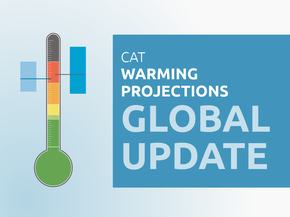Country summary
Overview
Under Argentina’s new government, progress in developing and implementing climate policies has taken a step backwards. Among the restructuring and budget cuts in the national public administration, Argentina’s former Ministry of Environment has been demoted to the sub-secretary level, and the continuity of its previous climate policies remains in doubt. Meanwhile, the government continues to invest heavily in fossil fuels, notably a USD 30 billion LNG terminal to export fossil gas out of Vaca Muerta. Overall, CAT rates Argentina’s climate targets and policies as “Critically insufficient”.
Under President Milei’s administration which assumed office in December 2023, Argentina’s national government has been substantially restructured, with a focus on reducing the size of the public administration and cutting expenditure. In this process, the former Ministry of Environment has been reduced to the sub-secretary level, under the Secretary of Sport, Tourism and Environment (EcoNews Global, 2023).
During his presidential campaign, President Milei had stated he does not believe in man-made climate change and that his government will not support climate policies, including threats to leave the Paris Agreement (Colombo, 2023). While his administration later stated that Argentina will not be leaving the Paris Agreement, during COP29, Argentina recalled its delegation only a few days into the negotiations. Overall the outlook is bleak on Argentine increasing climate ambition for the next four years (Larena, 2024; Spring, 2023).
The new government plans to continue developing the Vaca Muerta fossil gas fields, as well as a fossil gas pipeline and the LNG terminal planned by the previous administration. To support these large investments, the government set out an incentive package called RIGI or Incentive Regime for Large Investments (KPMG, 2024).
In 2022, emissions in Argentina rebounded above 2019 levels after a sharp drop in 2020 due to COVID-19. This puts Argentina’s 2030 emissions projections under current policies at approximately 15% above its already unambitious 2030 target. Based on a study by UNICEN exploring energy scenarios (Blanco & Keesler, 2022), if Argentina were to implement additional policies to scale-up low carbon energy sources and reduce energy demand, it could get close to its NDC target. However, to be consistent with limiting warming to 1.5°C, Argentina would need to develop more ambitious policies, especially to stop deforestation and reduce livestock-related emissions.
Argentina submitted an updated NDC in December 2021 that sets an unconditional target that is only a marginal improvement on the previous iteration. Argentina’s latest target only achieves a “Highly insufficient” rating when compared to required domestic efforts, and to Argentina’s fair share contribution to global climate change mitigation. With emissions (excl. LULUCF) projected to grow significantly after 2022, Argentina is set to miss its NDC target.
In the last few months, climate policy has been significantly deprioritised in Argentina. However, there have been some positive developments:
- After denying climate change and claiming Argentina would exit the Paris Agreement, the Milei administration promised to keep all existing international climate commitments, including both the NDC and long-term strategy (LTS) targets.
- Subsidies for power and fossil gas have continued to progressively decrease, including plans to mitigate the impact on the most vulnerable groups of the population. However, it is unclear how successful those plans are in protecting these groups.
- New measures were introduced to reform the power market, in an effort to increase competition and private sector investment.
There is much that Argentina could do to increase its climate ambition, including:
- Re-committing to its existing domestic climate policies and make resources available for their implementation.
- Phasing out support for upstream oil and fossil gas developments.
- Setting out a transition plan for the energy sector and revive existing renewables policies such as the RenovAr auction scheme.
- Setting out a low-carbon transition plan for the land sector, including agriculture, livestock and land use change.
Description of CAT ratings
The CAT rates each country’s targets and policies against (1) its fair share contribution to climate change mitigation considering a range of equity principles including responsibility, capability and equality, and (2) what is technically and economically feasible using modelled domestic pathways which in absence of a better method are based on global least-cost climate change mitigation.
Comparing a country’s fair share ranges and modelled domestic pathways provides insights into which governments should provide climate finance and which should receive it. Developed countries with large responsibility for historical emissions and high per-capita emissions, must not only implement ambitious climate action domestically but must also support climate action in developing countries with lower historical responsibility, capability, and lower per-capita emissions.
The CAT rates Argentina’s climate targets and policies together as “Critically insufficient”. The “Critically Insufficient” rating indicates that Argentina’s climate policies and commitments reflect minimal to no action and are not at all consistent with the Paris Agreement’s 1.5°C temperature limit.
Argentina is far from meeting its fair share contribution to climate change mitigation. Argentina’s NDC and policies and action are rated as “critically Insufficient” when compared to our modelled domestic pathways. Argentina’s unconditional NDC is rated as “Highly Insufficient” compared to our modelled domestic pathways.
To achieve its NDC target, Argentina would need to enhance its current policies which at the moment lead to over 4°C of warming by the end of the century.
To get a better rating Argentina would need to set more ambitious climate targets and establish associated policies that can curb the growth in national emissions and set them on a downward trend.
We rate Argentina’s policies and actions as “Critically insufficient” when compared to modelled domestic emissions pathways. This rating indicates that Argentina’s climate policies reflect minimal to no action and are not at all consistent with the Paris Agreement’s 1.5°C temperature limit.
Argentina’s policies and action rating compared to modelled domestic pathways is now worse than in our previous assessment due to an update in our current policy projections for the agriculture sector. Our latest projections expect higher growth in agricultural and livestock production, leading to higher emissions by 2030.
During the second half of 2023 the previous Argentinian government came out with three strategic climate policies: the National Strategy for International Climate Financing 2023, the National Strategy for the Use of Carbon Markets 2023 and the National Strategy for Sustainable Finance, 2023 (ENFS) (Banco Central de la República Argentina, 2023; Government of Argentina, 2023e; MECON, 2023). However, these are so far only high-level documents meant to structure future work on designing climate finance roadmaps and possibly a cap-and-trade system in the Argentinian power and industry sectors. It is unclear how - or whether - the Milei administration will design and implement these policies.
In December 2022, Argentina published its latest National Plan for Climate Change Mitigation and Adaptation. The strategy includes climate measures and targets covering all major sectors, including targets for the decarbonisation of the transport sector, incentives to increase energy efficiency in buildings, and measures to reduce food loss and food waste. This strategy, however, does not include any new renewable energy targets, nor any significant measures to reduce emissions from the land sector, especially those linked to livestock.
The full policies and action analysis can be found here.
We rate Argentina’s NDC target of “not exceeding the net emission of 349 million tonnes of carbon dioxide equivalent in 2030” from its November 2021 updated NDC as “Highly insufficient” when compared with modelled domestic emissions pathways, or what they will do within their own territory.
The “Highly insufficient” rating indicates that Argentina’s NDC target in 2030 leads to rising, rather than falling, emissions and is not at all consistent with limiting warming to 1.5°C. If all countries were to follow Argentina’s approach, warming could reach over 3°C and up to 4°C by end of the century.
We rate Argentina’s 2030 NDC target from November 2021 as “Highly insufficient” when compared with its fair share contribution to climate action. The “Highly insufficient” rating indicates that Argentina’s NDC target is not at all consistent with any principle of fairness, like responsibility, capability, or equality. If all countries were to follow Argentina’s approach, warming could reach over 3°C and up to 4°C.
The improvement in Argentina’s NDC target rating against fair share since our last update, from “Critically insufficient” to “Highly insufficient”, is not due to Argentina submitting a new and stronger NDC target, but rather due to a literature update to our fair share (FS) ranges, which aligns our equity approaches with international environmental law (Rajamani et al., 2021). It therefore excludes studies based on cost-effectiveness; we also included additional studies to reflect the latest research available in the field. Therefore, this change of ratings does not represent improved climate action on the ground, compared to our previous assessment.
Argentina’s average share of emissions from Land Use, Land-Use Change and Forestry (LULUCF) over the past 20 years is more than 20% of the country’s total emissions. Between 2014 and 2019, however, emissions from LULUCF started falling up to as low as to 3% of total emissions, to bounce back to 22% in 2020. This indicates that Argentina’s recent approach to curbing land use emissions may have been working, and would need to be maintained, updated, and reinforced. For more information about forestry activities in Argentina, please see the policies and action section.
We evaluate the net zero target as: Poor.
In November 2022, Argentina submitted a long-term strategy (LTS) to the UNFCCC that includes a target to reach GHG neutrality by 2050 (Government of Argentina, 2022a). Argentina’s net zero target does not cover most of the good practice elements identified by the CAT net zero methodology. The target explicitly covers all gases and sectors of the economy, but the government has failed to disclose other key information such as the role of carbon dioxide removals.
Further analysis
Latest publications
Stay informed
Subscribe to our newsletter




